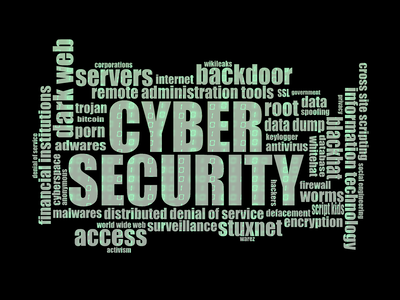Cyber security has become a top priority for organizations, governments, and individuals alike in today’s interconnected world. The digital landscape provides amazing opportunities, but it also poses a slew of cyber security threats that, if ignored, can have disastrous effects. In this blog article, we’ll look at some prevalent cyber security threats and offer practical advice on how to prevent being a victim of them.
Understanding Cyber Security Risks
1. Malware Attacks
Malware, short for malicious software, includes viruses, worms, Trojans, and ransomware. These malicious programs can infiltrate your computer or network, compromising your data and privacy. Malware often spreads through infected email attachments, malicious websites, or compromised software.
How to Avoid Malware Attacks:
- Keep your operating system and software up to date to patch vulnerabilities.
- Be cautious when downloading files or clicking on links from unknown sources.
- Install reputable antivirus and anti-malware software and keep it updated.
- Regularly back up your data to recover from a ransomware attack without paying a ransom.
2. Phishing Attacks
Phishing attacks involve tricking individuals into revealing sensitive information such as login credentials, credit card details, or personal identification. Attackers often use fake emails, websites, or messages that appear legitimate to deceive their victims.
How to Avoid Phishing Attacks:
- Verify the authenticity of emails and messages before clicking on links or providing information.
- Be skeptical of unsolicited emails, especially those requesting personal or financial information.
- Use multi-factor authentication (MFA) to add an extra layer of security to your accounts.
3. Social Engineering
Social engineering is a tactic where cybercriminals manipulate individuals into divulging confidential information or performing actions that compromise security. This can include tactics like impersonation, pretexting, or baiting.
How to Avoid Social Engineering Attacks:
- Be cautious when sharing personal information, even if the request seems legitimate.
- Verify the identity of individuals making requests for sensitive data.
- Educate yourself and your employees about common social engineering tactics.
Protect Your Digital World Today! Learn More About Cyber Safety and Security. Take Action to Safeguard Your Online Life.
4. Denial-of-Service (DoS) and Distributed Denial-of-Service (DDoS) Attacks
DoS and DDoS attacks overwhelm a target system with excessive traffic, rendering it unavailable. These attacks can disrupt online services, causing financial losses and damage to a company’s reputation.
How to Avoid DoS and DDoS Attacks:
- Implement network security measures, such as firewalls and intrusion detection systems.
- Use content delivery networks (CDNs) to distribute traffic and mitigate attacks.
- Have a response plan in place to minimize downtime in case of an attack.
5. Insider Threats
Insider threats come from individuals within an organization who misuse their access to sensitive information. These threats can be either malicious (intentional) or non-malicious (unintentional).
How to Avoid Insider Threats:
- Implement access controls and least privilege principles to limit access to necessary personnel.
- Monitor employee activities and network traffic for unusual behavior.
- Provide ongoing security training and awareness programs.
Tips for Strengthening Cyber Security
Apart from addressing specific cyber threats, here are some general tips to strengthen your cyber security posture:
- Regularly update and patch all software and hardware.
- Use strong, unique passwords for each account and enable multi-factor authentication where available.
- Encrypt sensitive data to protect it from unauthorized access.
- Conduct regular security audits and vulnerability assessments.
- Stay informed about the latest cyber threats and security best practices.
Conclusion : Cyber security risks are an ever-present concern in our digital age, but with awareness and proactive measures, you can significantly reduce your vulnerability. By understanding the types of threats you might encounter and following best practices to protect yourself and your organization, you can navigate the digital world with greater confidence and security. Remember that cyber security is an ongoing process, and staying vigilant is key to staying safe online.
